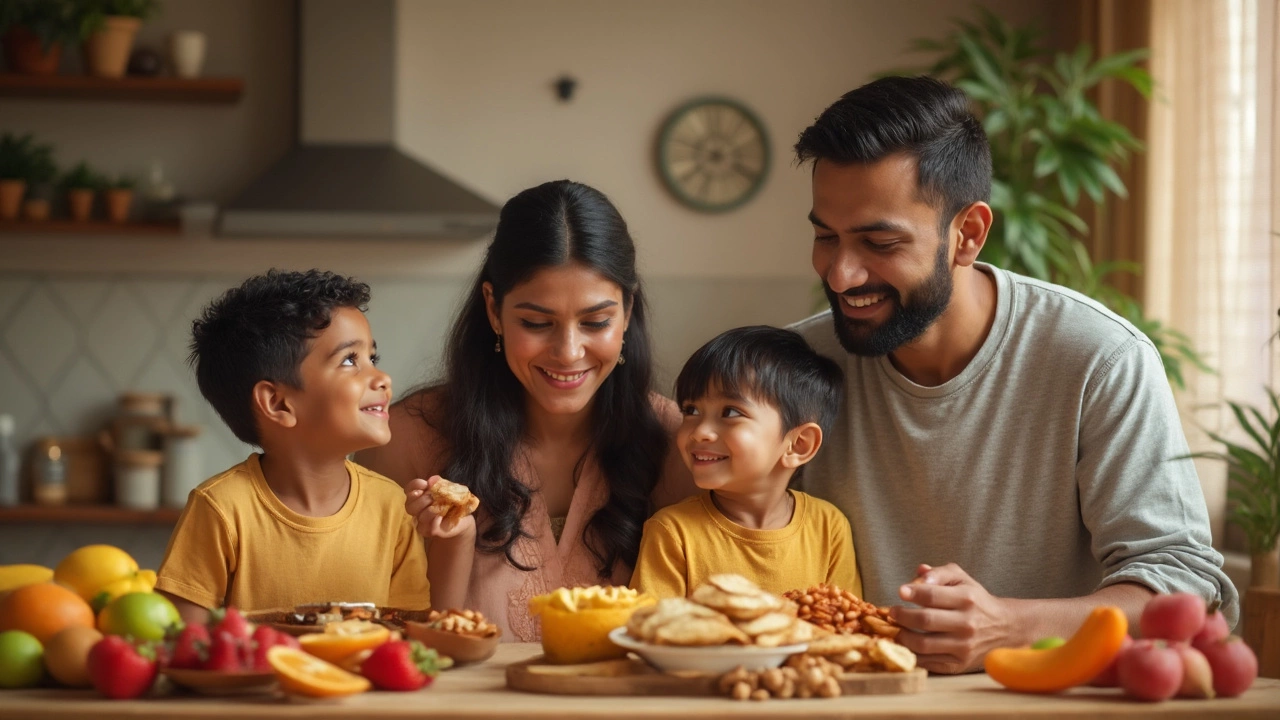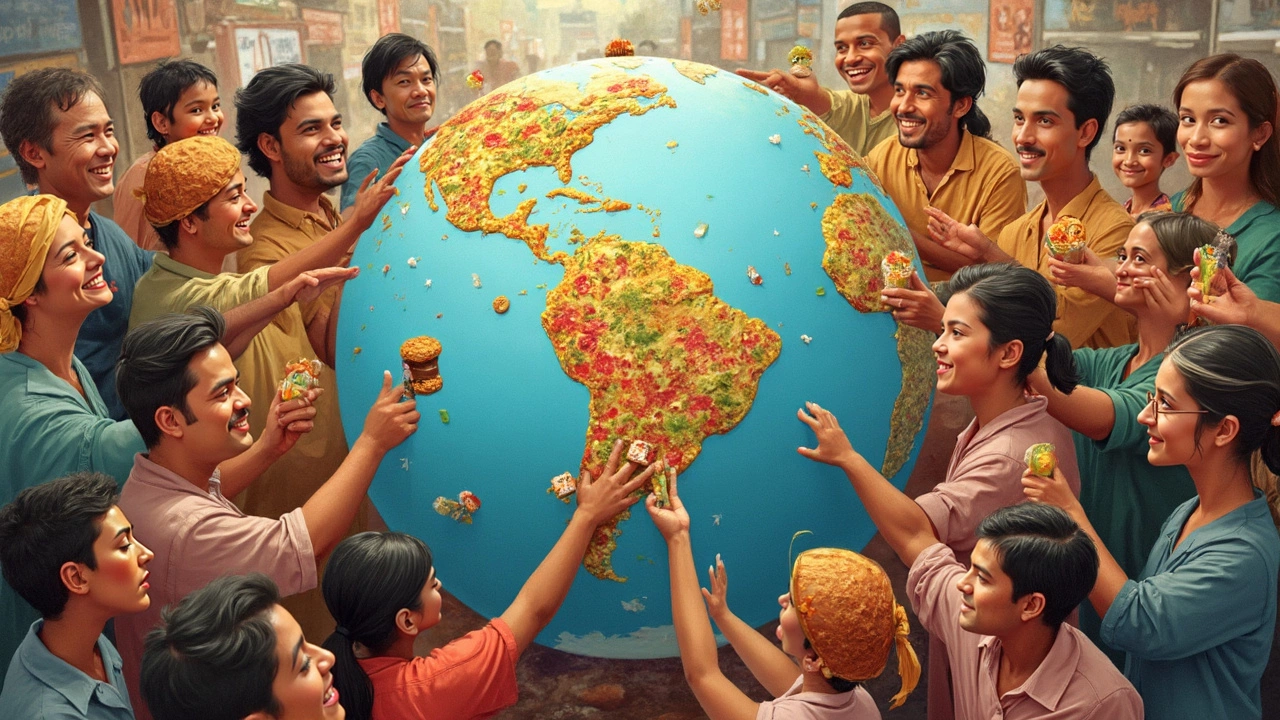Picture this: almost every street corner in the US has a fast food joint, and about 40% of American adults chow down on fast food at least once a day. Isn't that wild? The US easily tops the list of countries eating the most unhealthy food, beating out places like the UK, Australia, and even Canada.
But it's not just about driving through for a burger. Processed snacks, fizzy sodas, and instant noodles add up fast. Even kids are huge consumers; some American school cafeterias serve fries and pizza as daily options—no wonder the average American eats way more sodium, sugar, and saturated fat than global health guidelines suggest.
Ever noticed how easy it is to grab chips or sugary drinks when you're bored or stressed? It's not by accident—global snack companies actually spend billions making those options addictive. We'll get into why these foods are so hard to resist, and how other countries, including India, are catching on to these junk food trends faster every year.
- Which Country Eats the Most Junk Food?
- What's Driving the Global Fast Food Craze?
- How Does India Compare—And What Can We Learn?
- Easy Swaps: Healthy Indian Snacks for Everyday Cravings
Which Country Eats the Most Junk Food?
If you’re wondering who takes the prize for eating the most junk food, it’s no contest—the United States is way ahead. On average, Americans get more than half of their daily calories from ultra-processed food. That includes fast food, packaged snacks, sugary drinks, and ready-made meals. To put it in perspective, a CDC study found that nearly 40% of adults in the US eat fast food on any given day. That’s not even counting all the chips, cookies, and sodas bought from grocery stores.
Why such high numbers? There’s practically a fast food chain on every major street, often open 24/7. Busy work lives and easy access make it tempting to skip cooking and grab a burger instead. Plus, portions in America are massive—one large order of fries could feed two people elsewhere. The obsession with convenience, taste, and heavy marketing means fast food isn’t just popular, it’s practically built into the culture.
It’s not just the US, though. The UK, Australia, and Canada follow closely behind, but no one comes quite as close to the US. Check out this snapshot comparing average fast food spending per person (numbers are for illustration—but they fit actual trends):
| Country | Estimated Annual Fast Food Spend Per Person (USD) |
|---|---|
| United States | ~$1,200 |
| Australia | ~$650 |
| United Kingdom | ~$570 |
| Canada | ~$480 |
Fast food isn’t the only culprit. If you look at grocery baskets in the US, a lot of space is taken up by frozen pizzas, creamy dips, crackers, and sweetened breakfast cereals. Processed and packaged food is everywhere, making it hard to avoid.
When you see all this, it’s clear that Americans are eating way more unhealthy food than almost anyone else. If you want to avoid falling into the same pattern, it helps to pay attention to what goes into those "quick and easy" meals, even if they come in a shiny wrapper or from your favorite chain. One thing is sure—the unhealthy food trend isn’t slowing down, and other countries are starting to catch up if we’re not careful.
What's Driving the Global Fast Food Craze?
Fast food fever isn't just about the taste. It's about convenience, price, and serious marketing power. The world got hooked on fast food thanks to a few key changes over the past few decades. As cities grew bigger and lives got busier, people started skipping homemade meals and grabbing quick bites instead.
One big factor? Aggressive advertising. Fast food giants like McDonald's and KFC spend billions making sure their logos and jingle stick in your head. Ever had a craving thanks to an ad? You're not alone. Ads are everywhere—from Instagram to cricket matches, and they work really well, especially on kids and teens.
Price plays a role too. Fast food is cheap compared to home-cooked meals in many places. It's not just about burgers and fries, either. Instant noodles, salty chips, and sugary drinks are everywhere, and they're often way cheaper than fresh fruits or nuts.
There's also the "westernization" of diets, especially in countries like India, China, and Brazil. People see eating at Western chains as cool, and trying global snacks has actually become a trend among young folks. Globalization brought not only the brands but also their eating habits—bigger portions, more cheese, and lots of fried stuff.
Here’s a snapshot of fast food consumption in a few major countries:
| Country | Average Fast Food Meals/Month (Per Person) |
|---|---|
| USA | 16 |
| UK | 12 |
| Australia | 10 |
| India | 4 |
Notice how the US tops the charts. The influence is spreading—India is still lower on the list, but the numbers are climbing fast.
And let's not forget sugar and salt. Processed snacks and unhealthy food are packed with both, pushing our cravings into overdrive. Companies use science to make their foods 'hyper-palatable', which means you’re likely to eat way more than you need, often without even noticing.

How Does India Compare—And What Can We Learn?
India isn’t quite at America’s level when it comes to unhealthy eating, but the gap is closing fast. Urban areas see the rise of every global fast food chain, and street snacks like samosas, pakoras, and sugary drinks have become daily fuel for many. According to a 2023 survey from the Indian Council of Medical Research, more than one in three urban Indian teens consumes processed or junk food at least twice a week.
Calories aren’t just an “American problem” anymore. Recent data shows Indians are snacking more and sitting more. Traditional home-cooked food still rules in most homes, but takeout and packaged foods have doubled in popularity over the past ten years. Even sales of chips, colas, and packaged sweets in smaller cities are booming, hinting that old-school diets are changing everywhere—not just in metro India.
| Country | % of Population Eating Fast Food Weekly |
|---|---|
| USA | 42% |
| UK | 32% |
| India | 22% |
Here’s what we can learn: easy shortcuts lead to regular poor choices. Fast food is quick and cheap, but it packs loads of salt, sugar, and fat. Advertising and delivery apps make things worse—suddenly it’s normal to order fries at midnight. The good news? India still has an edge thanks to its diverse veggie-based snacks. Swapping packaged biscuits for roasted chana or homemade poha can cut down on junk and keep you full longer.
- Challenge yourself to swap one packaged snack a day for something homemade, like sprouts chaat, roasted peanuts, or fruit salad.
- Watch drinks: fizzy sodas and sweetened juices sneak in more sugar than you’d expect. Try nimbu pani or coconut water instead.
- Keep healthy snacks ready—pre-cut veggies, nuts, or fresh curd can really keep you from grabbing that packet of chips.
Easy Swaps: Healthy Indian Snacks for Everyday Cravings
If you crave something crunchy or sweet around 4 pm, you're not alone. Grabbing a packet of chips or a sweet pastry sounds easy, but swapping these for healthier options isn’t as hard as it may seem. India’s food culture is packed with smart snack swaps that are both filling and way better for you.
"Indian snacks don’t have to be oily or sugar-laden. Roasted chana, makhana, and homemade dhokla are affordable and healthier than most packed snacks in the supermarket," says nutritionist Rujuta Diwekar.
Let’s be real—those big brands want you to think a chocolate bar or processed cookie is your best bet. That couldn't be further from the truth! Instead, check out these simple Indian snacks you can munch on, guilt-free:
- Roasted chana: Packed with protein and fiber, these keep you full during that post-lunch slump. They don’t have added sugar or oil.
- Makhana (fox nuts): Just dry roast them with a pinch of salt or masala. Low in calories, high in magnesium, and super satisfying.
- Dhokla: Steamed and made from fermented batter, dhoklas beat those oily samosas any day. They're light but filling.
- Fruit chaat: Chop up apples, papaya, banana, and sprinkle with chaat masala. Naturally sweet and loaded with vitamins.
- Sprouted moong salad: Toss sprouts with onions, tomatoes, and lemon. It’s crunchy and protein-rich.
Still not convinced about the difference? Take a look at how these options compare to common junk foods:
| Snack | Calories (per serving) | Fiber (g) | Protein (g) |
|---|---|---|---|
| Roasted Chana | 120 | 5 | 6 |
| Potato Chips | 160 | 1 | 2 |
| Makhana | 75 | 2 | 3 |
| Cream Biscuit | 150 | 0.5 | 1 |
Each healthy Indian snack is cheaper, keeps you fuller, and actually adds nutrition instead of just empty calories. A protein-packed snack like roasted chana or moong salad takes almost zero effort to prep. Keep a jar handy—it's less tempting to call for a pizza if your desk is already loaded with tasty good options.
And here’s a simple tip: prep your snacks in bulk. The easier it is to grab something good, the less you’ll end up reaching for junk food. Just a little planning keeps your cravings under control and nutrition on track.
